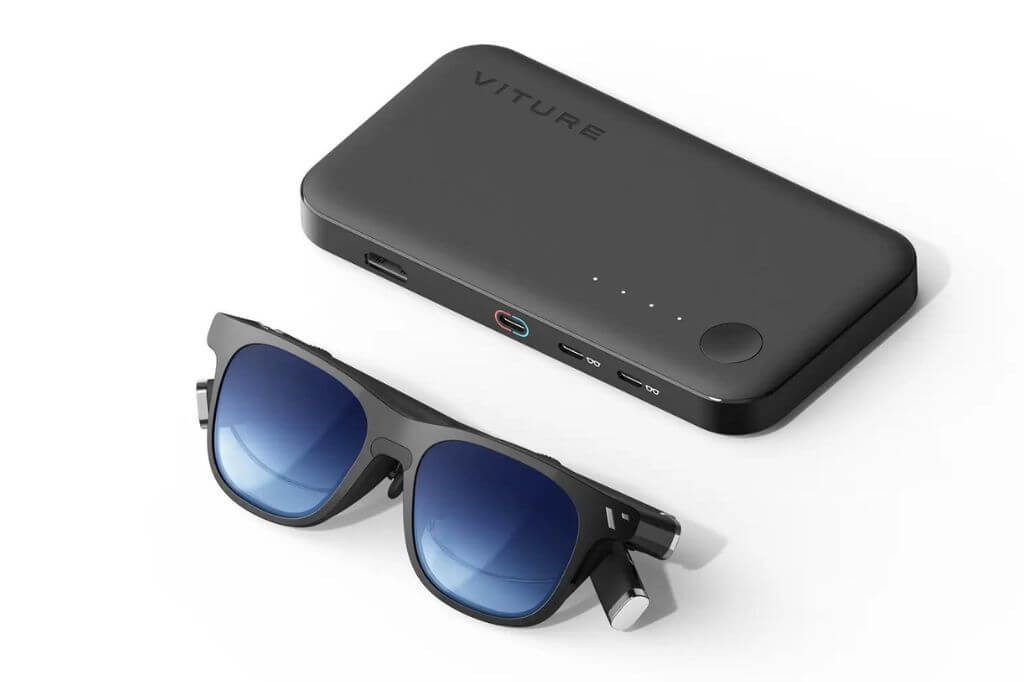A new XR startup is set to change the way we approach interactive experiences, combining portability, functionality, and style in its line of wearable tech. In just its first year of business, VITURE already received a number of significant recognitions for its flagship product, the VITURE One XR glasses. These accolades include being named a CES® 2023 Innovation Awards Honoree, one of TIME’s Best Innovations of 2022, and winning the Fast Company 2022 Innovation by Design Award.
The company has also made a significant impact on Kickstarter, raising more than $3 million for the VITURE One XR glasses.

Let’s take a look at how VITURE is breaking barriers in the wearable tech industry and how it plans to change the way we experience XR.
The VITURE One XR Glasses
The startup is known for its flagship product: the VITURE One XR glasses.
Combining functionality and style, their XR glasses are set to change the way we engage with content. Designed to deliver unique audiovisual experiences, the glasses utilize HARMAN AudioEFX technology, which delivers immersive audio experiences via a near-ear surround system and electrochromic film, which enables users to switch between Immersive and Ambient modes.
Aside from incorporating impactful technology into the VITURE One, other patented features enable the glasses to deliver next-level immersive experiences. These include accessibility features, such as the swappable nose bridge pads, the option to adjust the XR glasses to your eye prescription, a magnetic connector for easier linking to other devices, and head-tilt navigation for fully hands-free navigation.

The VITURE Story
As an avid gamer himself, VITURE co-founder and CEO David Jiang saw an opportunity for on-the-go entertainment. According to Jiang, he noticed that in-person experiences, such as sports games, are vastly different when viewed on TV. He wants to continue developing AR/XR technology that will allow users to access such immersive experiences, as well as super interactive sports experiences, in a virtual setting.
“With portable gaming and entertainment becoming more prevalent than ever, we’re pleased to bring the first stylish XR solution to the market that can handle streaming and AAA gaming on the go,” said Jiang in a press release shared with ARPost.

After working on other major projects, such as Google Glass, and noticing the growing need for on-the-go mobile gaming experiences, he connected with progressive inventors in 2021 to start working on the VITURE One XR glasses.
Through Jiang’s experiences, studying at the Harvard School of Design, working as a Microsoft intern, and working at Google, he discovered how users interact with personal technology. This discovery was a major influence on how the VITURE One XR glasses are designed, putting an emphasis on providing users with an optimal experience.
As an expert in spatial tech, as well as in AR tech and design, Jiang was able to design innovative wearable tech that’s both functional and fashionable.
Redefining the Future of Wearable Tech
What’s next for VITURE?
The VITURE One, together with its Mobile Dock, was available for demos at CES 2023. Aside from being able to try out the XR glasses, attendees had the opportunity to be among the first to see the Mobile Dock in action.

This new addition to the VITURE lineup will allow users to access new features, such as multiplayer mode, and compatibility with other viewing and gaming devices, such as the Nintendo Switch, Steam Deck, and TV sticks.
Aside from the Mobile Dock, there are also plans to create additional apps and features for the VITURE One neckband, shortly after the XR glasses are released with full availability in March.
Far from being just a wearable tech for gaming, the VITURE One XR glasses are also designed to elevate the way we stream our favorite content. Whether it’s using the apps through the neckband or using connections to other devices, users will be able to stream their favorite content anytime, anywhere.
VITURE’s awards continue to fuel VITURE’s drive for innovation. Aside from the accolades, the team greatly values the feedback received from early testers and users.




